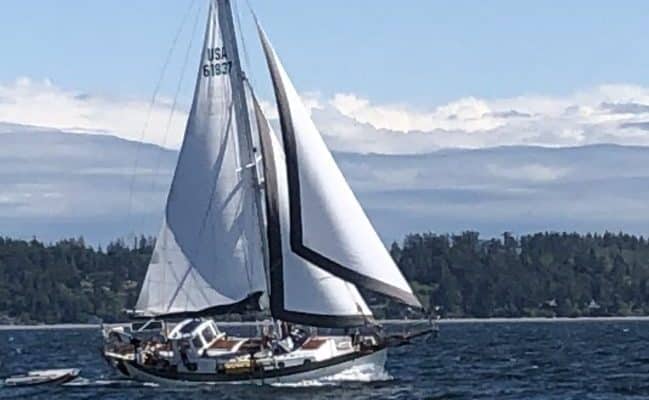
Category: Furling Sails


What are the characteristics of a good furling genoa?
The cloth for the jib or genoa should be the correct weight for the boat and rig. The panels and seams should be strong enough to handle strong winds and also be useful in light air. To be a good reefing sail, the patches should be deep to handle a wide wind range.The headsail must fit and complement the furling unit so the sail is functional when reefed.
A foam luff is very important for reefing. It can flatten the sail when the wind is strong and still keep the boat upright and moving in big waves and strong wind.
Radial vs. Crosscut: Most have their sails built crosscut using woven Dacron to keep the cost down.
Radial designs are more expensive to build, but much stronger and more suited for a wider wind range. With some radial designs you can mix the weights of sail cloth to make the sail a true multipurpose genoa. The clew should be a at a good angle to help sheeting the sail when reefed.
The UV cover for the leech and foot should be deep enough to cover when furled. I place the UV cover after the sail is finished so the UV can be changed quickly when needed.
When we build our furling sails, for mains or headsails, all of the key details are placed in the design, and the finished sail.


Montgomery 23 sail
Here is a nice picture I received from an owner of a Montgomery 23. I built new cream colored sails for the boat and it does look very traditional and fits the boat well.

Montgomery 17 Sail
This is a Montgomery 17 with cream colored sails we built for a boat in Canada.

New G-Spinn Sail
We set up this G-Spinn for the first time with the owner of a Newport 30
Contact Yager Sails today to get a free quote for our newest asymmetrical spinnaker, the G-Spinn.
